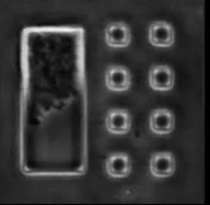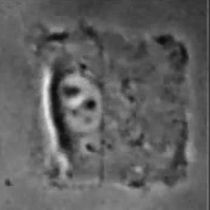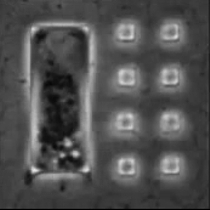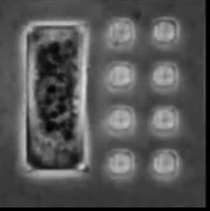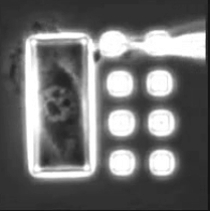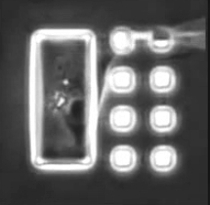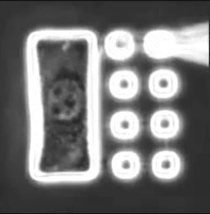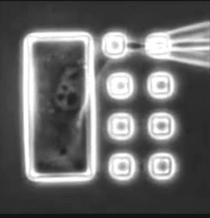| Overview | Cell Structures | Cell Migration | Cell Division |
Mechanism of Stiffness Sensing Revealed with a Composite Substrate |
Wong et al., Proc. Natl. Acad. Sci. USA 111:17176-17181 (2014) |
Our previous experiment using composite substrate, where an array of small photoresist islands are grafted on the surface of soft polyacrylamide gels, suggests that cellular stiffness sensing occurs across a distance of tens of microns rather than within single focal adhesions |

